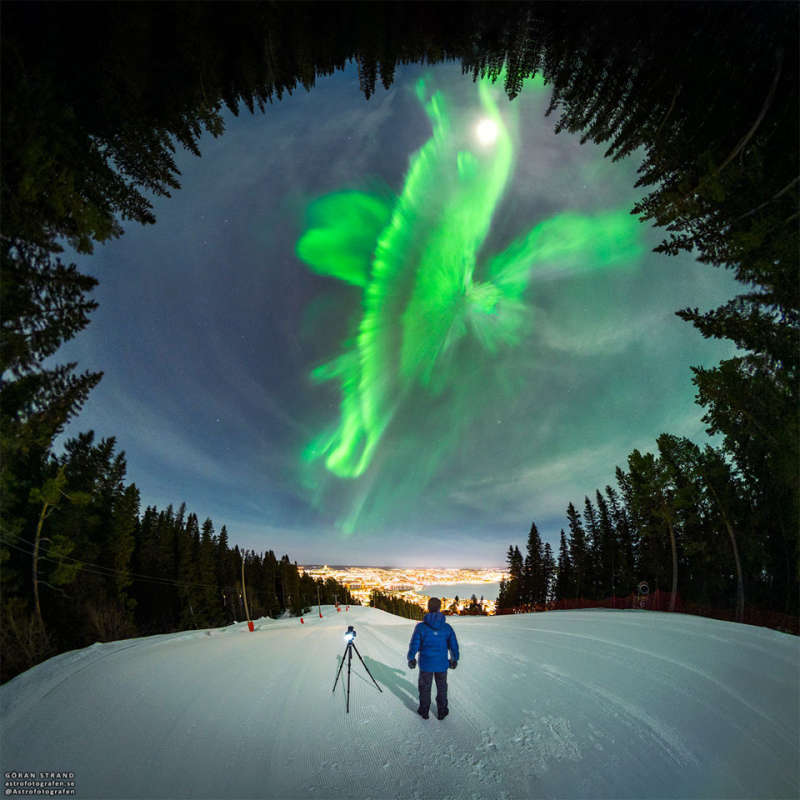Credit & Copyright: Göran Strand
Explanation:
What's that in the sky?
An aurora.
A large
coronal mass ejection occurred on our Sun earlier this month,
throwing a cloud of fast-moving electrons, protons, and ions
toward the Earth.
Part of this cloud impacted our Earth's
magnetosphere
and, bolstered by a sudden gap, resulted in
spectacular auroras being seen at some high northern latitudes.
Featured here is a particularly photogenic
auroral corona captured above a forest in
Sweden
from a scenic perch overlooking the city of
cstersund.
To some,
this shimmering green
glow of
recombining atmospheric
oxygen
might appear like a large
whale, but feel free to
share what it looks like to you.
The unusually
quiet
Sun of the past few years has now passed.
As our Sun now approaches a
solar maximum in its
11-year solar magnetic
cycle,
dramatic auroras like
this are sure to continue.
Open Science:
Browse 2,700+ codes in the Astrophysics Source Code Library
1999 2000 2001 2002 2003 2004 2005 2006 2007 2008 2009 2010 2011 2012 2013 2014 2015 2016 2017 2018 2019 2020 2021 2022 2023 2024 2025 |
Yanvar' Fevral' Mart Aprel' Mai Iyun' Iyul' Avgust Sentyabr' Oktyabr' Noyabr' Dekabr' |
NASA Web Site Statements, Warnings, and Disclaimers
NASA Official: Jay Norris. Specific rights apply.
A service of: LHEA at NASA / GSFC
& Michigan Tech. U.
|
Publikacii s klyuchevymi slovami:
aurora - severnoe siyanie
Publikacii so slovami: aurora - severnoe siyanie | |
Sm. takzhe:
Vse publikacii na tu zhe temu >> | |
